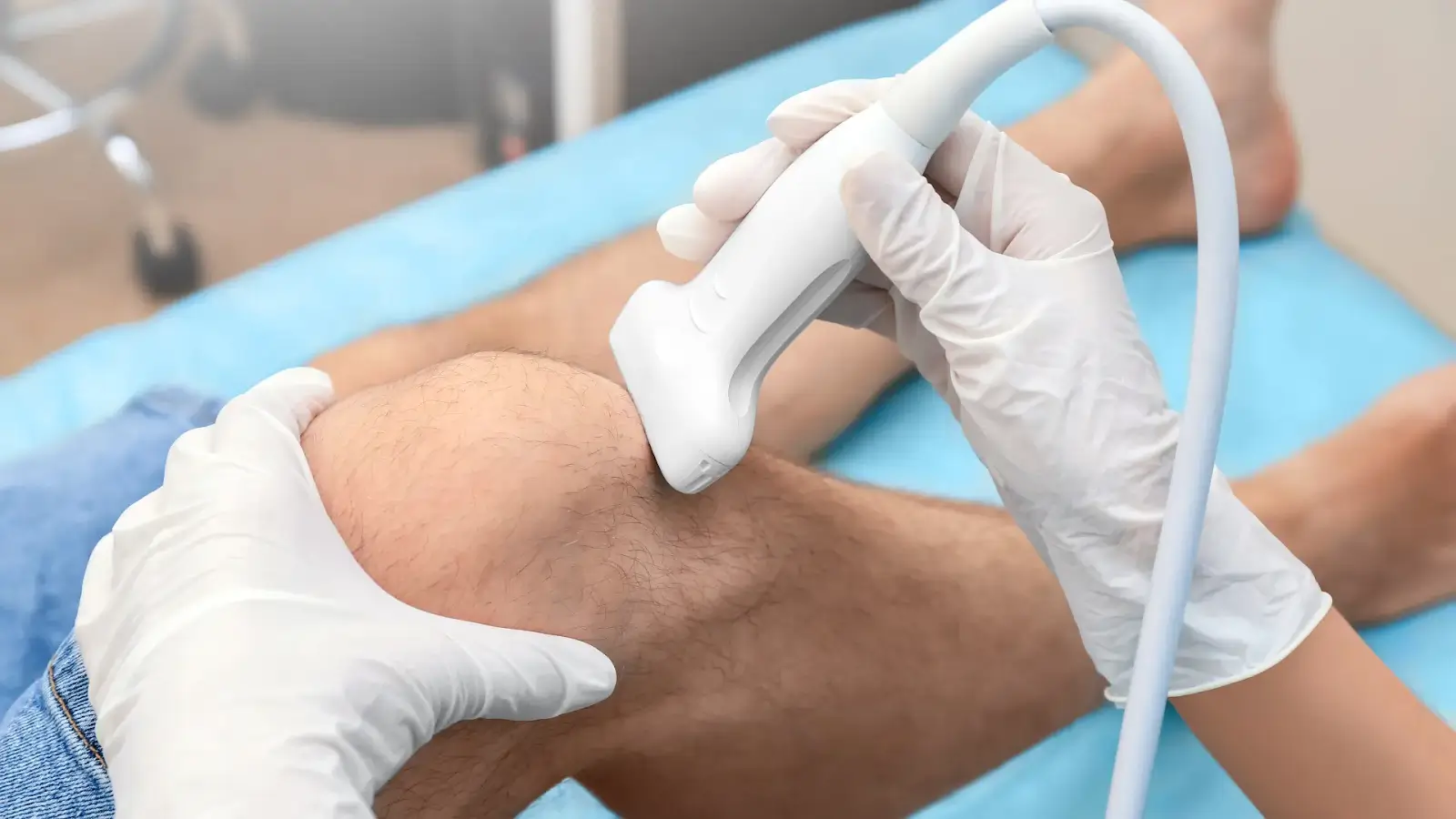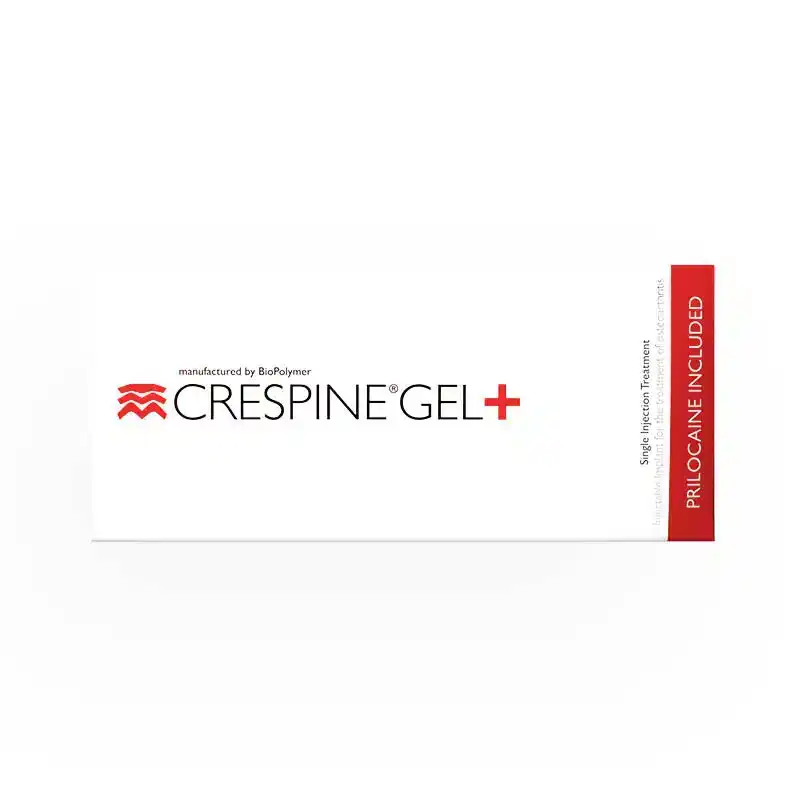Only for Licensed Professionals
Only for Licensed Professionals
.webp)
Crespine Gel FDA Approval – What You Need to Know
Nina Petrovic
Last Updated On: December 30, 2024
Hyaluronic acid injections have become a well-tolerated and effective treatment for knee osteoarthritis (OA). They often offer better results than placebo treatments in reducing pain and stiffness. Studies consistently show that hyaluronic acid injections can be particularly beneficial for managing mild to moderate knee OA symptoms.
Knee osteoarthritis causes pain, stiffness, and swelling, challenging everyday activities. While surgical treatments are available, many patients prefer minimally invasive options. Crespine Gel, a hyaluronic acid-based viscosupplement, has demonstrated significant success in alleviating pain, improving joint function, and enhancing the quality of life for knee OA patients.
This article will dive into the Crespine Gel FDA approval status, clinical trial results, and the regulatory approval process behind this treatment.
Key Takeaways
- The FDA’s rigorous approval process ensures the safety and efficacy of injectable products like Crespine Gel, requiring extensive clinical testing and regulatory evaluation.
- Studies show Crespine Gel effectively reduces pain and improves joint mobility, with minimal side effects such as temporary swelling or redness.
- While Crespine Gel has approval in Europe and other regions, it has not yet received FDA approval in the United States.
- FDA approval would enhance Crespine Gel’s accessibility, provide assurance of safety, and facilitate its integration into evidence-based medical practices.
- Crespine Gel is available in various countries, but differing regulations may limit its availability in certain markets.
About: Med Supply Solutions has been operating since 2016 and is known as one of the industry’s top and trusted suppliers of cosmetic and viscosupplementation products. Contact our sales department for more information about buying Crespine online.
Tier pricing
Save 1.06%
6 or more
$187.00 each
Save 2.12%
11 or more
$185.00 each
Save 2.65%
21 or more
$184.00 each
The FDA Approval Process for Injectable Gels

The FDA approval process is critical for ensuring the safety and efficacy of medical products like injectable gels. This rigorous process involves preclinical studies, clinical trials, and detailed regulatory reviews to protect public health before a product can be marketed in the United States.
Approval begins with preclinical studies in labs and animals to assess safety and biological activity. Following this, an Investigational New Drug (IND) application is submitted, allowing clinical trials to start if approved.
Clinical trials progress through three phases, evaluating safety, efficacy, dosage, and potential side effects like Crespine Gel side effects. Afterward, a New Drug Application (NDA) or Biologics License Application (BLA) is submitted for FDA review, which considers all data before approving.
Injectable gels face specific requirements, including detailed data on composition, manufacturing, and intended use. FDA approval ensures products meet stringent safety standards, providing confidence to healthcare providers and patients while ensuring high-quality clinical care.
Clinical Studies Supporting Crespine Gel’s Safety and Efficacy

Clinical studies have demonstrated the safety and efficacy of Crespine Gel, a hyaluronic acid-based injectable, in treating knee osteoarthritis. A notable post-marketing Phase IV study evaluated 84 patients over nine months. Participants received a single intra-articular injection of Crespine Gel, and their progress was monitored using the Western Ontario and McMaster Universities Arthritis Index (WOMAC) scores.
The study reported significant reductions in pain, stiffness and improvements in physical function, with peak benefits observed around five months post-injection. Notably, only minor and transient adverse events, such as swelling and redness at the injection site, were reported, underscoring the treatment’s safety profile.
Regulatory Status of Crespine Gel in Various Countries
Crespine Gel has not received approval from the U.S. Food and Drug Administration (FDA). This means it cannot be marketed or used for clinical purposes within the United States. Healthcare providers and patients seeking treatment for osteoarthritis should exercise caution and explore alternative FDA-approved options to ensure safety and compliance.
In contrast, Crespine Gel has achieved regulatory approval in Europe, where it holds a CE mark. This certification signifies compliance with the European Union’s stringent health, safety, and environmental standards. The CE mark has allowed its use in several European countries for managing osteoarthritis symptoms, reflecting a strong assurance of quality and safety. Consequently, Crespine Gel has gained acceptance in clinical practice across the region.
Crespine Gel’s regulatory status varies outside of the United States and Europe. For example, it is classified as a Class III medical device in Malaysia, acknowledging its therapeutic benefits. However, some countries face regulatory challenges, such as differing approval processes, safety concerns, or limited clinical data. These hurdles can delay or restrict the availability of Crespine Gel, potentially limiting access for patients seeking alternative osteoarthritis treatments.
Impact of FDA Approval on Clinical Practice

FDA approval plays a critical role in shaping clinical practice. This mark provides healthcare providers and patients with confidence in the safety and efficacy of medical products. FDA approval would enable widespread use of Crespine Gel in the United States, allowing practitioners to incorporate it as a trusted option for managing osteoarthritis and joint-related conditions.
Approval also facilitates insurance reimbursement, making treatments more accessible to patients. It provides a standardized framework for proper usage, dosage, and administration, ensuring consistency across clinical settings. Additionally, FDA approval encourages ongoing research and data collection. This further validates the product’s benefits and supports its integration into evidence-based medical practices.
Without FDA approval, practitioners must rely on alternative approved treatments. Doing so may limit the options available for patients seeking innovative solutions like Crespine Gel.
Conclusion
Crespine Gel represents a promising option for managing osteoarthritis symptoms, offering pain relief and improved joint function. While its regulatory approval in Europe and other regions highlights its clinical utility, the absence of FDA approval in the United States remains a barrier to wider adoption.
Understanding the FDA approval process and the clinical evidence supporting Crespine Gel empowers healthcare providers to make informed decisions about its use. Patients and practitioners alike should remain vigilant about safety and consider alternative FDA-approved options where necessary.
FAQs
1. What does Crespine Gel do?
Crespine Gel is an injectable treatment that can alleviate pain and improve joint mobility in patients with osteoarthritis.
2. How does Crespine Gel work?
Crespine Gel contains hyaluronic acid, which helps restore lubrication and cushioning in affected joints, reducing friction and inflammation.
3. What side effects can one expect from Crespine Gel injections?
Common Crespine Gel side effects include temporary swelling, redness, and discomfort at the injection site. These typically resolve within a few days.
4. How long does Crespine Gel provide relief?
Patients often experience symptom relief for up to six months, depending on the severity of their condition and individual response to the treatment.
References
Bhandari, M., Bannuru, R. R., Babins, E. M., Martel-Pelletier, J., Khan, M., Raynauld, J. P., Frankovich, R., Mcleod, D., Devji, T., Phillips, M., Schemitsch, E. H., & Pelletier, J. P. (2017). Intra-articular hyaluronic acid in treating knee osteoarthritis: a Canadian evidence-based perspective. Therapeutic advances in musculoskeletal disease, 9(9), 231–246. https://doi.org/10.1177/1759720X17729641
Øvrebø, Ø., Perale, G., Wojciechowski, J. P., Echalier, C., Jeffers, J. R. T., Stevens, M. M., Haugen, H. J., & Rossi, F. (2022). Design and clinical application of injectable hydrogels for musculoskeletal therapy. Bioengineering & translational medicine, 7(2), e10295. https://doi.org/10.1002/btm2.10295
Products
Cart
Log In
Newsletter
Subscribe for exclusive offers and updates on new arrivals
Share feedback at:
Working Hours
MON - SUN 9AM to 6PM EST
The Most Popular Brands
Med Supply Solutions
Support
Secure checkout is guaranteed with full adherence to PCI DSS payment standards.
Products listed here are guaranteed authentic and manufacturer-sourced.
Pay easily with trusted providers


*Google and Apple Pay are currently only available via a direct link provided by your account manager.
Copyright 2025. Med Supply Solutions
